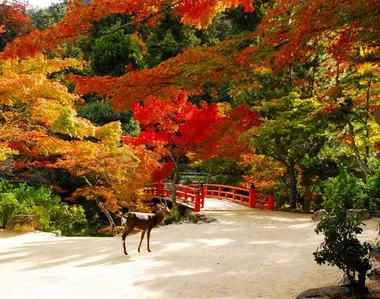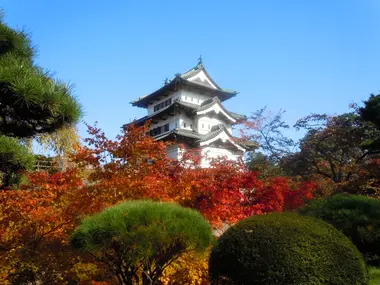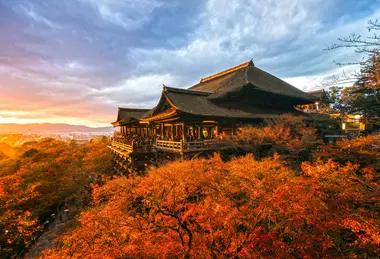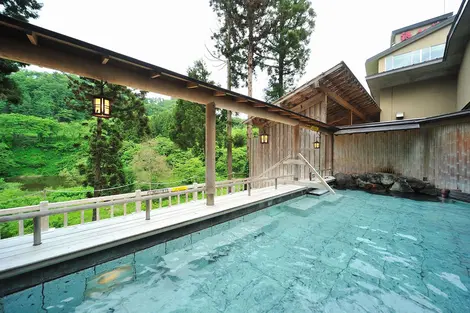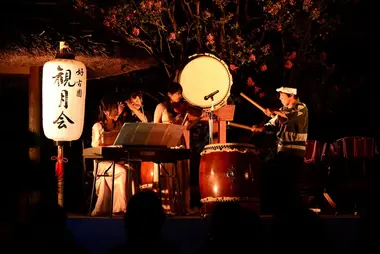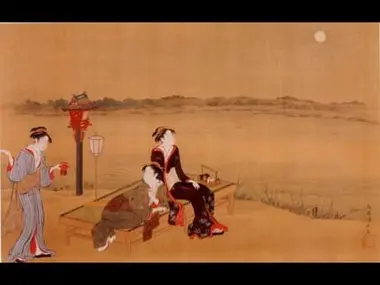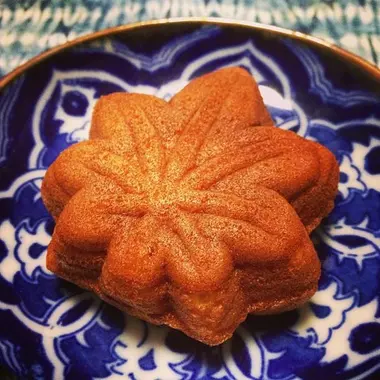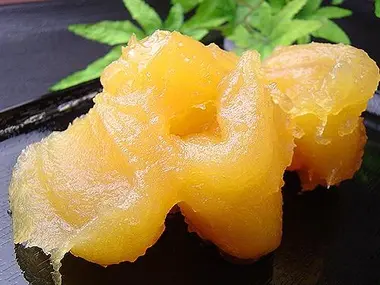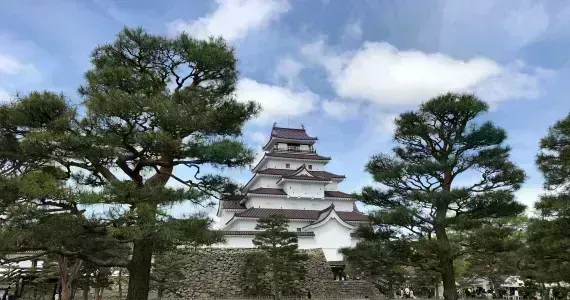Travelling to Japan in autumn
Autumn colors have become a real highlight of national tourism. From the most famous temples and shrines in Kyoto and Tokyo, to the country's most splendid mountains and gorges, this colorful spectacle attracts many tourists in search of magnificent natural panoramas.
In Japan, the color change of autumn leaves is called kôyô (紅葉), or momiji when it comes to maple leaves. There are two types of foliage in Japan: red momiji and yellow momiji. Just as the Japanese celebrate cherry blossom during the hanami season, they also celebrate the colors of autumn, from mid-November to mid-December, before the first snowflakes arrive.
The terms momiji and koyo represent the very essence of Japanese autumn.
- Momiji: This term refers specifically to Japanese red maples. Japan is famous for its maple trees with their deeply cut leaves, which turn an intense shade of red in autumn. Red maples are associated with the ephemeral beauty of nature, a concept deeply rooted in Japanese culture.
- Koyo: This word, which literally means "autumn foliage", refers to the more global phenomenon of leaf transformation , whether in red maples, golden ginkgos or other tree species. The term can be used to describe the full range of autumn colors, from red to yellow to orange.
Koyo-gari (literally "autumn leaf hunt") is a tradition similar to hanami (cherry blossom viewing), where people gather to admire the changing landscape. Many sites, such as Kyoto's temples, are illuminated at night to enhance this natural beauty.
When to see maples, momiji and koyo in Japan?
Autumn leaves, known as momiji (red maples) and koyo (the changing color of leaves), are a must-see spectacle in Japan. The time of year to enjoy them varies according to region and altitude. Here are the ideal times to observe this natural transformation:
- Early November - mid-November: In northern regions like Hokkaido or the Japanese Alps, the leaves start to change early, thanks to cooler temperatures.
- Late November - early December: This is the perfect time to explore more central regions, such as Tokyo, Kyoto and Nikko, where historic parks and temples are transformed into living canvases of art.
- Early to mid-December: Southern regions such as Kyushu and Shikoku see autumn colors a little later, allowing travelers to extend their Japanese autumn experience.
Some destinations, such as Nara Park, Mount Takao near Tokyo or Kyoto Gardens, are particularly famous for their enchanting landscapes.
The ideal regions for discovering Kôyô
Here are three must-see regions of Japan in autumn, each with a specific place where the beauty of momiji and koyo reaches its peak.
Here are a few must-see autumn gems!
Tohoku: Hirosaki Castle
Located on the northern tip of Honshu, Japan's main island, the Tohoku region is one of the most beautiful places to enjoy the colors of autumn. Its wide-open spaces, shimmering valleys and historic sites offer an atypical backdrop, characteristic of autumn in Japan.
Renowned for its thousands of momiji, Hirosaki Castle and its charming namesake town offer a collection of historic buildings from the Meiji period (1868-1912). Between the Fujita Memorial Garden, the botanical garden in the castle grounds, and beautiful temples and shrines, including the five-story Saisho-in pagoda, there's plenty to enjoy the autumn colors in a cultural and historic landscape!
Kansai: Kiyomizu-dera temple
Kyoto, the ancient capital of Japan, is famous for its historic temples and beautifully preserved natural landscapes. In autumn, the city becomes even more enchanting with the changing colors of the leaves.
The hilltop Kiyomizu-dera temple offers an exceptional panoramic view of the city and surrounding forests. The red maple trees surrounding the temple create a magical atmosphere, and visitors can also enjoy the special night lighting in autumn.
Hokkaido: Daisetsuzan National Park
Hokkaido, Japan's northernmost island, is the first region where autumn colors appear, starting in late September.
Daisetsuzan National Park is Japan's largest, and it's here that autumn arrives first. Its towering mountains offer spectacular hiking trails, and the views from the summit allow you to admire momiji as far as the eye can see. In addition to the red maples, you can also see the golden birches and larches that add golden touches to the landscape.
Fall, the season to enjoy the finest onsen
Tohoku is also particularly renowned for the quality of its natural volcanic hot springs and numerous onsen. Spa towns are favorite tourist destinations for the Japanese, who appreciate them for their relaxing properties and the benefits of their waters. As the weather cools, why not spend the end of the day lounging in one of Japan's most renowned baths?
The Zaô Onsen spa is one of Japan's oldest and most famous, and produces cloudy sulfurous water reputed to improve blood circulation and skin infections! In the same Yamagata prefecture, the spa village of Ginzan Onsen offers exceptional onsens in the heart of nature, with breathtaking views. In the same spirit, Hanamaki is also renowned. Ten onsen are located in this mountain valley, offering bathing in sublime hot-water pools, often with splendid views.
Let yourself be tempted by one of these magical waters during your stay!
Traditional autumn festivities: moon celebrations and illuminations
Many festivities are organized around the reddening of the leaves in autumn. This gives rise to illumination shows all over the country, as well as traditional Japanese festivals. The best-known of these is O-Tsukimi, Japan's celebration of the moon. Held every year between mid-September and mid-October, the moon festival has its origins in China, when the stars served as calendar markers. Shining brightly in a clear sky, the festival celebrates the full moon of the autumn equinox, heralding good harvests. O-Tsukimi has become a veritable institution in the land of the rising sun. Contemplating the moon with friends, a glass of sake in hand, has become as much a part of autumn traditions as eating mochi (a sticky pastry filled with red bean paste), also based on the popular legend of the white rabbit living on the moon and making mochi there.
- Find out more: O-Tsukumi, the traditional moon festival
On this occasion, temples and shrines will open their doors for an evening under the stars. Participants will be able to visit the sites under the glow of the moon, and listen to a few concerts of traditional music while tasting mochi purchased from street stalls at the entrances to the places of worship. Numerous national monuments will also be holding wakes, such as Himeji Castle in Hyogo prefecture, or Genkyû Garden in Shiba prefecture.
Autumn's culinary specialties: Persimmon, pumpkin and sweet potato on the menu
Autumn may be famous for its golden and purple landscapes, but it's also a beautiful season to discover... on the plate! In fact, it heralds the arrival of a whole host of easy-to-cook seasonal produce. From matsutake (Japanese mushrooms), to sweet potatoes, Tsukimisoba, or Kuri-Kinton, chestnut treats, discover these must-haves that invite themselves onto Japanese tables with the coming of autumn.
Discover: Autumn specialties in Japan
The moon festival also finds its way into Japanese cuisine, with Tsukimi soba, buckwheat noodles cooked in broth and topped with an egg to evoke the moon, or the Tsukimi burger (a hamburger or sandwich with a fried egg). There's no shortage of recipes to satisfy every palate! These are accompanied by mochi or dango (grilled mochi) for dessert, when these pastries aren't serving as an offering to the moon!
Kuri kinton is a traditional Japanese pastry, wagashi, which makes its appearance in autumn with the arrival of chestnuts. Made entirely from chestnuts and sugar boiled together, this puree, once cooled, is shaped into large chestnuts. You don't even have to go to specialized pastry shops to find it: most konbini sell it!
Momiji manjû is one of the specialties of the island of Miyajima, near Hiroshima. It's a traditional pastry in the shape of a maple leaf, filled with red azuki bean paste. Since the maple leaf is the symbol of Hiroshima, this cake was traditionally eaten in autumn. Today, it's a pastry for all seasons, and a must-have souvenir from Miyajima!
Why travel to Japan in autumn?
- Less crowded: Compared to spring, often crowded because of the cherry blossoms, autumn offers a quieter experience.
- Natural wonders: Mountains, national parks and Japanese gardens are transformed into fairytale landscapes.
- Cultural experience: Autumn is also a season of festivals, such as the Jidai Matsuri in Kyoto, celebrating Japanese history, or the Shichi-Go-San, a ceremony for children.
- Autumn cuisine: Japan also celebrates the autumn harvest with seasonal dishes like matsutake mushrooms, chestnuts, and persimmons, which are at the heart of local gastronomy.
To find out more:
- The best spots from north to south to admire autumn colors
- Enjoying autumn leaves around Tokyo
- 5 autumn leaf hikes near Tokyo
- Autumn colors by train
- Travelling in Japan: guide and advice


